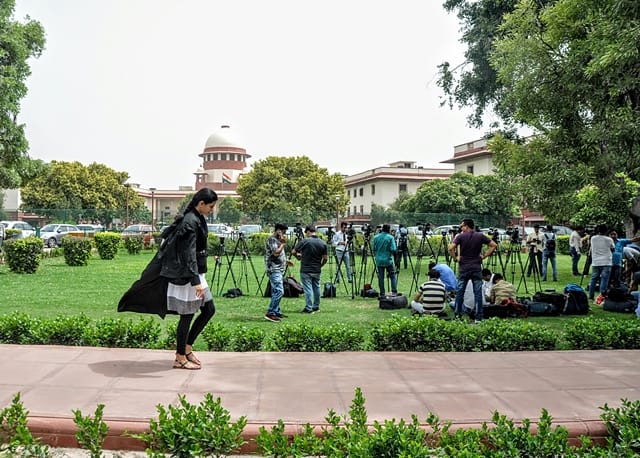
Month: July 2019

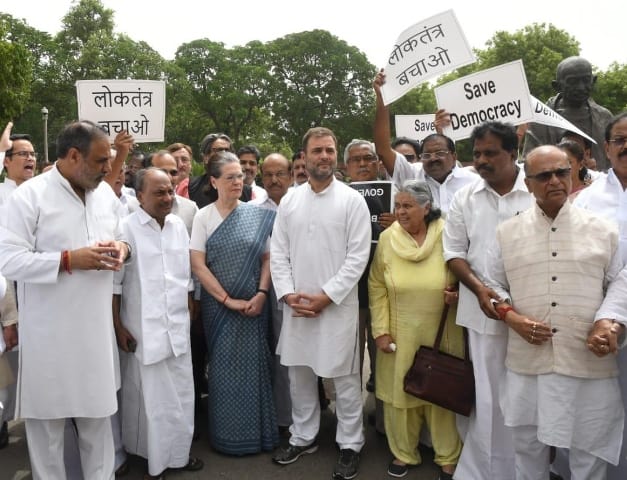
Congress Protests Poaching Of Its Legislators
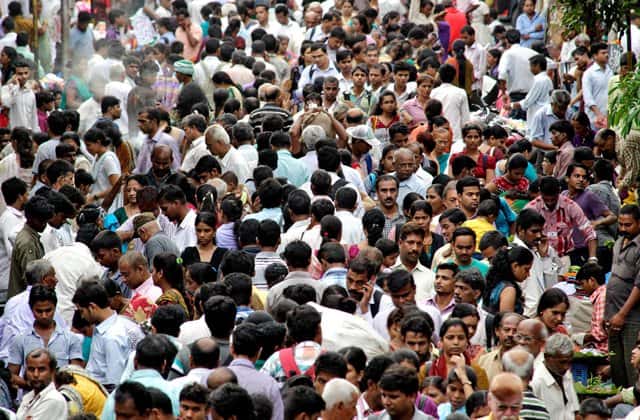
India’s Ominous Tryst With Politics Of Population
How does one discuss population explosion in a country where age-old tradition is one of elders blessing the young: “may you be blessed with a hundred children”?
Who would want to pick quarrel with the powerful religious leaders? The Hindus are exhorted to multiply since a Muslim begets a dozen children from his four wives he supposedly marries. And the latter is advised to increase the numbers to fight “discrimination and injustice”; else he would remain “second class citizens” forever.
Like the nuclear mutual assured destruction (MAD), this is mutual assured explosion (MAE), exacerbated by mutual distrust. It remains a major reason why India is poised to outpace China as the world’s most populous nation by 2023, advancing earlier estimates.
Besides the socio-economic complexities this generates, there is an overwhelming, but silent, political factor. Politicians pay lip service to family planning and leave all the action to officials and medicos. Where political thrust is needed, a general lack of political will has scuttled family planning.
Records say Mahatma Gandhi opposed “killing life” and advocated only abstinence. Family planning pioneer D K Karve was attacked by people all around, sacked by the Christian missionary college that had employed him.
Deep scare against family planning seeped in after Sanjay, Indira Gandhi’s younger son, sought to enforce family planning under the coercive garb of Emergency (June 1975-March 1977), contributing to her electoral defeat.
Successive governments have since shunned anything that smacks of coercion and incentives. Detailed plans are carried out, but the soul is missing. Celebrities fight shy of popularizing it. The last national icon to advocate small family norms, entrepreneur JRD Tata, died in 1992.
If India’s physical map is imagined as an inverted pyramid, its population figures would slide from its north to south. Incidentally, the inverted pyramid is also the official symbol, a red warning signal, heeded only partially and reluctantly.
This unevenness has raised political concerns. Scholar-lawmaker Jairam Ramesh on July 4 sought an assurance from the government that five southern states – Karnataka, Andhra Pradesh, Telengana, Tamil Nadu and Kerala — will not be ‘punished’ by reducing their representation in Parliament just because they have managed to control their population.
The South has reached replacement levels of fertility. Contrast this with the six northern states — Uttar Pradesh, Bihar, Rajasthan, Madhya Pradesh, Jharkhand and Chhattisgarh. These laggards have total fertility rates in excess of the replacement level of 2.1.
By 2050, population in the southern States will decline from the present level of 15 percent to around 12 percent. But the share of the northern states — Bihar, Madhya Pradesh, Rajasthan and Uttar Pradesh, bearing appropriate acronym BIMARU (sick) — will increase from 40 percent to about 44 percent.
Political implications are clear. Under Lok Sabha’s current seat distribution, the BIMARUs send 204 members, while the five southern states together elect only 128 members. With decline in their population, the southern states’ representation could reduce further, lowering their role in driving the national agenda. The South losing representation in parliament, Ramesh warned, “will be highly unfair to the pioneers of family planning.”
Lok Sabha’s next seats review will be after the 2031 census. The present distribution among the States, at one seat for a million voters, is based on the 1971 census when India’s population was 543 million, hence 543 seats. Will baby boom be politically rewarded? India is irretrievably heading for this north-south imbalance.
This friction, visible for long, could get sharper with the repeat victory of the Bharatiya Janata Party (BJP). Its “one country” advocacy threatens the regional parties that rule in the south.
During the election campaign, some southern leaders talked of forging a ‘Dravidanadu’. M K Stalin, chief of one of the oldest regional parties, Dravida Munnetra Kazhagam (DMK) supported it. It has swept the polls in Tamil Nadu. Will population imbalance prompt its return to separatist platform that it had shed in 1962?
A southern grouping, however, is difficult given conflicting interests among regional parties and the federal government’s capacity to exert financial pulls and political pressures — and its penchant to declare anything it disapproves as “anti-national.”
Relatively better educated and developed, the South has always felt discriminated on allocation of resources by New Delhi. Analyst Tara Krishnaawamy argues that 20 percent population of the south pays 30 percent tax, creating 25 percent of India’s GDP — which is double that of the north. But it gets only 18 percent of the federal funds.
The baby boom, however, is a national issue. Unless the rapid growth of population is contained, it will be difficult to ensure quality education, healthcare, food, housing, clean drinking water, sanitation, hygiene and a healthy environment for all.
Paradoxically, Indian families are becoming smaller as better nutrition, vaccination and healthcare ensure couples lose fewer children to malnutrition and infections, such as diarrhoea, pneumonia, sepsis and tuberculosis.
India has certainly achieved notable progress in reducing mortality rates. Life expectancy at birth increased from 44 years in the mid-1960s to 68 years today. But the child mortality rate at 38 per 1,000 births lags behind China’s rate of 11. Early marriage and pregnancy still contribute to excessive maternal deaths, and life expectancy of Indian women is eight years less than their counterparts in China.
Today, the official approach is to discourage contraceptive methods that are coercive and potentially dangerous and towards those that enhance reproductive health and empower women and families. But there is a long way to go before this way of thinking becomes a reality.
In this patriarchal society, female sterilization remains the most prevalent method of contraception in India. The procedure is more invasive than other types of contraceptives, and doesn’t allow women to space when they have children and give their bodies time to recover from childbirth.
The government has increased domestic investment for family planning. At the 2012 Summit, India committed to spend $2 billion by 2020 for family planning program and, in July 2017, India renewed its commitment to invest $3 billion by 2020. The Budget 2019-20 allocation is, however, negligible.
The UN population projections for India show different possibilities. Assuming current fertility of 2.3 births per woman remains constant, its population would grow to 1.8 billion by 2050 and 2.5 billion by 2100. Even under the instant-replacement fertility variant, assuming 2.1 births per woman, India’s population would reach 1.9 billion by the century’s close.
The oft-cited UN medium projection, however, assumes fertility will decline to below replacement by 2035 and remain at 1.8 births per woman in subsequent decades. It could, then, peak at 1.7 billion in 2060 before declining to 1.5 billion by 2100.
The low projection assumes more rapid fertility decline to about 1.3 births per woman, resulting in the population peaking at 1.5 billion around 2040 and falling to 900 million by 2100.
Things can improve only long-term and there is no time to lose. Till then, Indians should stop fooling themselves and not be smug about demographic dividend. Millions of under-nourished children born of anemic mothers are burdening the humankind.
The writer can be reached at mahendraved07@gmail.com
]]>SC Tells Rebel MLAs To See K'taka Speaker
Ten Congress and JD(S) MLAs had earlier moved the Supreme Court, seeking a direction to the Assembly Speaker to accept their resignation and not proceed with the applications for their disqualification from the House.
“The court has accepted the request of the 10 MLAs, who had resigned, to appear before the Speaker at 6 pm today, which means that they will fly from Mumbai to Bengaluru,” senior advocate Mukul Rohatgi, who appeared on behalf of the dissident legislators before a bench headed by Chief Justice Ranjan Gogoi, told reporters.
He said that the Speaker will pass an order on the resignation issue and it will be placed before the court tomorrow.
“The case will come up tomorrow for hearing and the Director General of Police (DGP), Karnataka, has been directed to provide proper police protection to all the 10 MLAs when they land in Bengaluru and go to the Speaker’s office,” the former attorney general said.
Ten dissident legislators of Congress and JD(S) are currently staying at a hotel in Mumbai.
Rohatgi clarified that the order is applicable only to the 10 MLAs, while adding that the other disgruntled Karnataka legislators can also move the apex court.
“The importance is that the Speaker will hear these 10 MLAs and pass an order, for which we had made a request to the court,” he added.
The 13-month-old Congress-JDS government had on Saturday slumped into crisis following the resignation of MLAs.
The 225-member state Assembly includes one nominated MLA. The halfway mark is 113. (ANI)
]]>CBI Raids Indira Jaising In FCRA Case
“Mr Grover and I are being targeted for the human rights work we have done over the years,” Jaising told reporters outside her residence.
The CBI officials, however, refused to comment on the recovery made during the raids.
The probe agency had, last month, registered a case against NGO Lawyers Collective, whose founding members are Jaising and Grover on the charges of violating rules under the FCRA.
The FIR was registered based on a complaint by the Ministry of Home Affairs against the NGO.
The complaint stated that the NGO “received foreign contribution amounting to Rs 32.39 crore” during the period 2006-07 to 2014-15.
The investigative agency said that Jaising had received Rs 96.6 lakh remuneration from foreign contributions made to the NGO during her term as Additional Solicitor General (2009-14).
The complaint also alleged that the expenses of her foreign trips as ASG were borne by the NGO without the Home Ministry’s prior approval.
In a statement, the Lawyers Collective (LC) had expressed “shock and outrage at the action of the CBI” in registering an FIR against them.
(ANI)
]]>Sonia, Rahul Lead Protest On Karnataka
“We are protesting against Karnataka and Goa issue,” Rahul Gandhi told ANI.
Congress leaders Anand Sharma, Adhir Ranjan Choudhury, Shashi Tharoor, Gaurav Gogoi, and many others joined the demonstrating lawmakers who raised slogans while carrying black and white banners.
Commenting on the political crisis in Karnataka and Goa, Thiruvananthapuram lawmaker Shashi Tharoor, “This is absolutely a murder of democracy and assault on the Constitution.”
“If BJP’s idea is to try to induce people to join BJP one way or the other, are they trying to turn the country it into a one-party state?” Tharoor questioned.
But that is not the Constitution’s vision is, its vision is that in a democracy somebody will lose, he added.
As per sources in the party, Congress had called a parliamentary party meeting under the leadership of Sonia Gandhi where all Lok Sabha and Rajya Sabha MPs were present.
Congress is talking to other opposition parties to come and support them over the recent political crisis in Karnataka and Goa, sources added.
Congress party which is grappling for survival in Karnataka suffered yet another blow after 10 of its MLAs in Goa joined the BJP on Wednesday.
(ANI)
]]>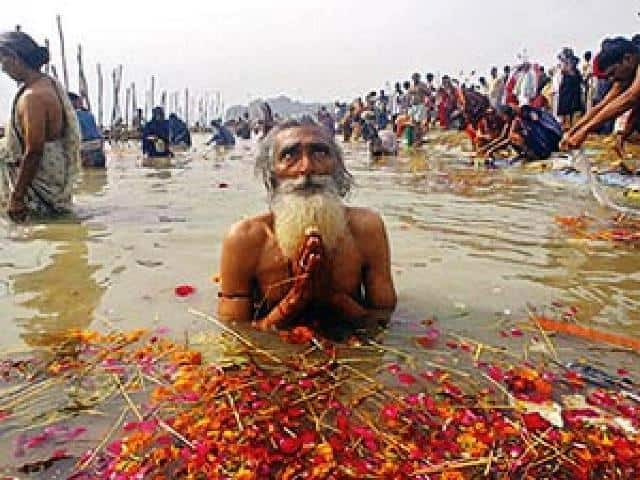
Ganga Gets A Breath Of Life In Kanpur
Located on the west bank of river Ganga, Kanpur is a densely populated city famous for its leather industries. The city produces an estimated 450 million litres of municipal sewage and industrial effluent daily, a majority of which was flowing directly into the holy river until recently.
In November 2018, a century-old Sisamau drain, which produces over 140 million litres per day (MLD) of sewage, was completely stopped from discharging sewage into the Ganga. This was the biggest drain-tapping initiative undertaken at a cost of over Rs. 60 crore.
The sewage has been diverted via pipelines to two sewage treatments plants (STPs) on the outskirts of the city – 80 million litres a day to Bhingawan STP and 60 MLD to Jajmau STP.
The tapping of major drains in Kanpur is a big achievement to keep the holy river and its tributaries clean.
Rajiv Ranjan Mishra, Director General of National Mission for Clean Ganga, said, “In Kanpur, there are two rivers – Ganga and Pandu. Six drains go to Pandu River and 16 rivers come to Ganga. On both sides, drains have been tapped. Now, we are left with three drains flowing into Ganga and three into Pandu.”
“We have sanctioned new STP as part of one city, one operator concept. Whichever drains have not been tapped are part of that project. There is integrated planning so that drains flowing into either Pandu or Ganga rivers are all tapped. Major drains have already been tapped,” he added.
Under the AMRUT Scheme, sewer infrastructure will be developed for houses located on the banks of Ganga by 2020 so that the household waste does not flow directly into the river.
“The level of dissolved oxygen (DO) in Ganga has improved. Several drains have also been closed. After the implementation of a Rs.370 crore project to connect houses located on the banks of Ganga through sewage, there will be a lot of improvement. We are also controlling tannery waste,” said Ghanshyam Dwivedi, Project Manager – Ganga Pollution Control Unit at Jal Nigam in Kanpur.
Hailed as the “leather city of the world”, Kanpur has 400 small, medium and big tanneries, many of which are over a century old.
With the launch of Namami Gange programme, stringent action against these tanneries has been taken so that no effluents flow into the river.
Select big tanneries have set-up personal effluent treatment plants that filter out some of the solid waste such as remnants of animal skin, sludge and excreta. From here, the partially processed waste is sent for further treatment to a large common effluent treatment plant (CETP).
Mohammad Moin Lari, Partner, Northern Tannery at Jajmau in Kanpur, said wastewater from tanneries is going through the CETP’s conveyor system. “In our factory, we treat our wastewater and then send it to CETP for further treatment. Almost every tannery follows this process,” he added.
In Jajmau, 36 MLD common effluent treatment plant exists, out of which 9 MLD is dedicated to treating the effluent coming from tanneries.
The National Mission for Clean Ganga has approved another 20 MLD CETP at an estimated cost of Rs. 554 crore for the treatment of tannery wastewater. It is estimated to be functional by the end of 2020.
“For medium term and long term improvement, a new plant is under construction. For that, we are insisting that the Jajmau Tannery Association takes an active part in the construction. Ultimately, it is their thing. In fact, they are supposed to invest maximum money for construction for which 75 per cent of the money is given by NMCG. So, we are giving them financial help to get it constructed. Naturally, we would expect very strict compliance of all the things for which we are giving them help. The least we expect from the industry is to have self-control and cooperate with the enforcement machinery,” said Mishra.
Asok Kumar, Executive Director (Projects) at National Mission for Clean Ganga said, “We have started a new STP to treat the effluents keeping in mind the population of 2035. Kanpur, which has a heavy load of industrial effluents, is also being tackled to get clean water to the Ganga”.
The government’s efforts by restricting the flow of urban sewage and industrial effluents from cities like Kanpur will help keep the holy river clean.
(ANI)
]]>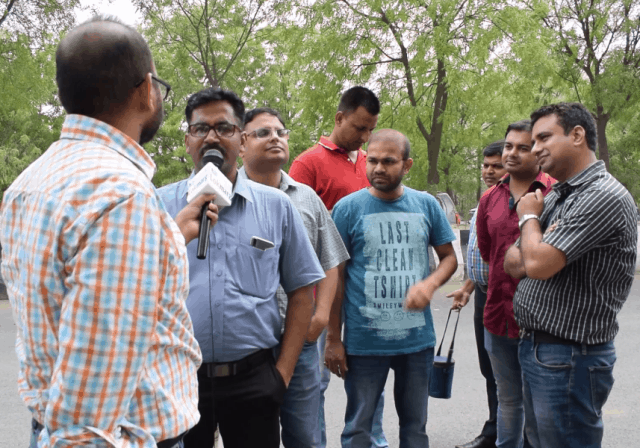
Union Budget – ‘Tax-Payers Overburdened’
Income tax payer community feels shortchanged by the Union Budget 2019-20 as they feel that instead of bringing more people into the tax net to increase earnings, successive governments have only taxed the organized sector professionals.
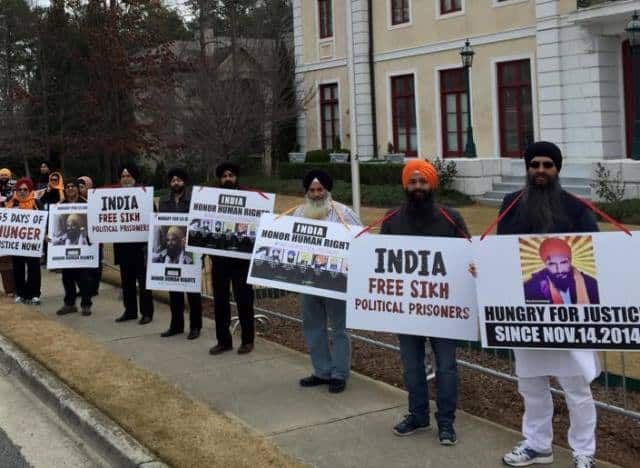
Govt Bans 'Pak-Backed' Sikhs For Justice
Sources said that Centre took the decision to call SFJ an unlawful association in consultation with state governments, including Punjab. Major Sikh bodies also raised alarm over secessionist activities of SFJ and so the government decided to curb the potential threat.
SFJ and its secessionist campaign referendum 2O20 is supported by Pakistan, sources added.
MHA sources told ANI that official website of SFJ biz ‘www.sikhforjustice.org’ and referendum 2020 biz ‘www.2020referendum.org’ were sharing and sourcing content from a Karachi based websites of a number of SFJ activists including Guruswamy Singh Punnu.
12 cases have been filed against the SFJ, while 39 people associated with the organization have been arrested by various security agencies. Many social media handles of the organisation have also been blocked.
SFJ wanted to use Kartarpur Corridor for propagating their secessionist ideology, sources said while adding that there is no concrete evidence that Pakistan has curbed or banned the group.
India is likely to raise the issue regarding security and safety of pilgrims during Kartarpur talks on July 14.
Punjab Police and National Investigative Agency (NIA) busted several modules of SFJ indulging in various subversive activities in Punjab. The probe revealed that activists were radicalised and funded by foreign-based SFJ handlers Gurpatwant Singh Pannun, Harmeet Singh, Paramjit Singh Pamma.
Paramjit Singh Pamma was seen during India-England World Cup match. He is also associated with Sikhs for Justice, said MHA sources.
Punjab Chief Minister Captain Amarinder Singh welcomed the Union Government’s decision to ban SFJ and dubbing it as an unlawful organisation.
In a statement, Punjab CMO said, “CM Captain Amarinder Singh has hailed the Govt of India’s decision to ban Sikhs for Justice (SFJ) as an unlawful association, describing it as the first step towards protecting the nation from the anti-India/secessionist designs of ISI-backed organisation.”
(ANI)
]]>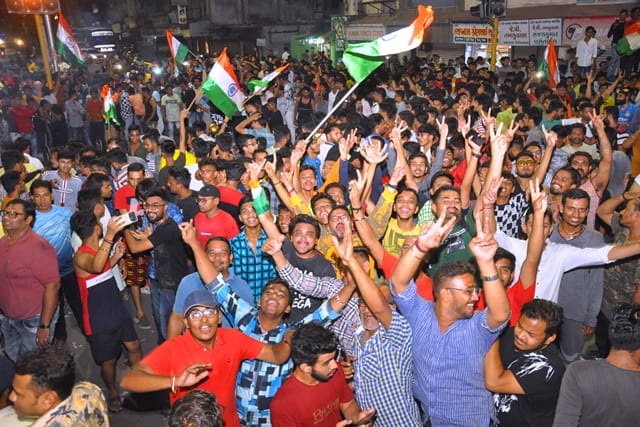
India Crash Out Of Cricket World Cup
Chasing a moderate target of 240 runs, India got off to a horrendous start as New Zealand rattled the top-order. Matt Henry got Rohit Sharma (1) caught behind while Virat Kohli (1) got leg-before off Trent Boult’s delivery. Henry returned and engulfed KL Rahul (1), who was also caught behind.
Rishabh Pant and Dinesh Karthik tried to settle in and played cautiously. However, New Zealand piled on the misery as Jimmy Neesham caught a brilliant catch in the gully to see off Karthik (6) off Henry. Pant found support in Hardik Pandya and the duo added 47 runs for the fifth wicket.
Kiwi skipper Kane Williamson brought in Mitchell Santner and the latter did not disappoint as the spinner dismissed Pant (32). Santner returned and sent Pandya (32) back to the pavilion, reducing India to 92/6 after 30.3 overs.
MS Dhoni and Ravindra Jadeja rebuild India’s innings as the duo added 116 runs. Dhoni assumed the role of second fiddle to Jadeja, who played aggressive shots from ball one and along the way completed his fifty. Boult tilted the table and again put India under pressure as dismissed Jadeja (77), who played a skier and gave a comfortable catch to Williamson at long off.
As the onus shifted on Dhoni, Martin Guptill pulled off a brilliant run out and dismissed Dhoni (50). When India needed 24 runs off nine balls, Lockie Ferguson bowled Bhuvneshwar Kumar for a duck and Neesham completed the formalities as he got Yuzvendra Chahal (5) caught behind. India wrapped up on 221 after 49.3 overs.
Earlier, Ross Taylor and Williamson dragged New Zealand to post 239 runs for the loss of eight wickets in a rain-hit innings after electing to bat first.
On the reserve day, Taylor and Tom Latham, who were stranded on 67 and 3 after 46.1 overs on Tuesday due to rain interruption, tried to carry forward the innings at 211/5. However, India had another plan as Jadeja run out Taylor (74) off Jasprit Bumrah’s delivery.
The tail-enders added 28 runs to the scoreboard to finally finish their 50-over quota. Along the way, New Zealand two more wickets as Bhuvneshwar Kumar got rid of Latham (10) and Matt Henry (1). Boult and Santner remained unbeaten on 3 and 9, respectively.
ANI
]]>